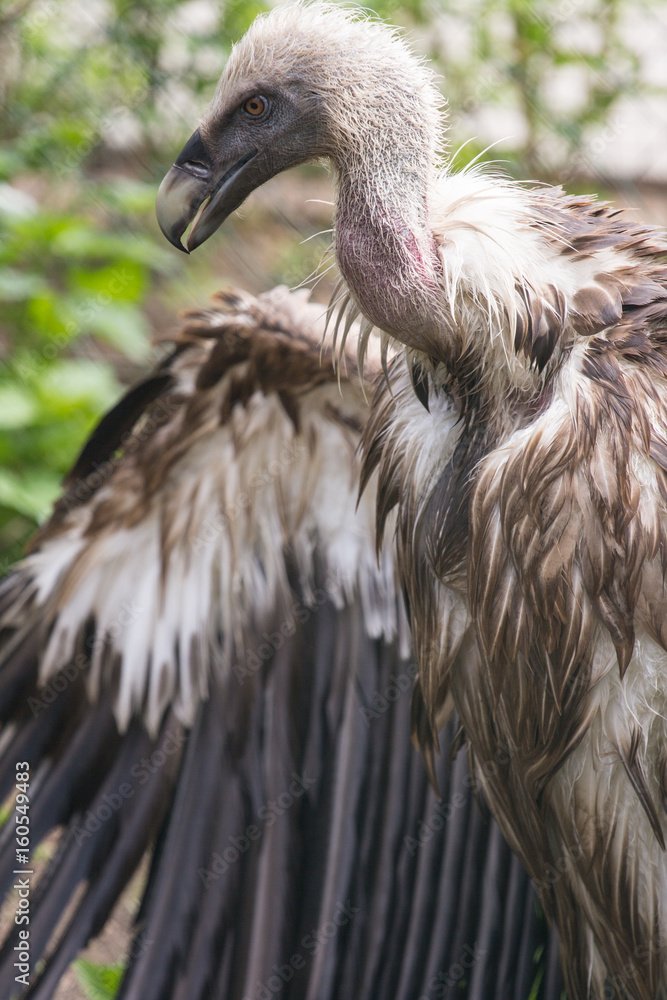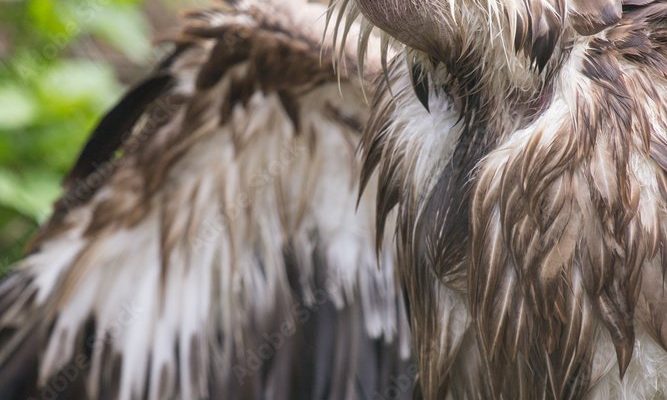
When we delve into the history of these incredible scavengers, we’re not just looking at feathers and bones; we’re examining a complex narrative that intertwines with the history of our planet. From ancient ancestors to the species as we know it today, the Griffon Vulture’s evolution is a testament to the resilience of life. So, grab a cup of coffee, and let’s take a journey through time to explore how the Griffon Vulture became the remarkable bird we admire today.
The Origins of Vultures
To understand the evolution of the Griffon Vulture, we first need to look back at the broader category of vultures. These birds belong to the family Accipitridae, which also includes eagles and hawks. Their ancestors date back around **60 million years**, right after the dinosaurs went extinct. You might think, “That’s a long time!” It is! During this period, many bird species began to diversify. Some adapted to the niche of scavenging, evolving specialized features for consuming carrion.
Vultures developed *hooked beaks* and *sharp talons*, perfect for tearing into decaying flesh. Over time, these adaptations helped them thrive in various environments. So, while the world was changing dramatically, vultures were becoming masters of survival. The Griffon Vulture, specifically, evolved in the Old World regions—Europe, Africa, and Asia—where they found abundant food sources and suitable habitats.
The Evolutionary Tree
The Griffon Vulture is part of a larger family tree of vultures that diverged into several distinct lineages. Within the **Gyps genus**, to which the Griffon belongs, researchers identify several species, including the Indian Vulture and the White-rumped Vulture. These birds share common traits but have adapted to their specific environments and food sources.
Interestingly, genetic studies show that modern vultures are more closely related to storks than to other raptors. This might surprise you, as we often picture eagles flying alongside vultures in the sky. However, this genetic connection signifies how diverse avian evolution can be. The Griffon Vulture’s adaptation to scavenging has allowed them to survive and thrive where many other species have faltered.
Physical Adaptations for Survival
One of the most striking features of the Griffon Vulture is its impressive **wingspan**, which can reach up to **2.8 meters** (about 9 feet). This large wingspan allows them to soar gracefully on thermal updrafts, conserving energy while searching for food. But it’s not just about size; their physical adaptations also include a bald head, which is essential for hygiene.
You might wonder, “Why a bald head?” Well, unlike many birds that have feathers on their heads, vultures have evolved without them to minimize bacteria when they feed on carcasses. This may sound grim, but it’s a survival tactic that protects them from infections.
Additionally, their powerful digestive systems are equipped to handle bacteria and toxins found in rotten meat. Griffon Vultures are nature’s clean-up crew, and their adaptations make them incredibly efficient at their roles.
The Role of Griffon Vultures in Ecosystems
Griffon Vultures play a critical role in maintaining healthy ecosystems. By consuming carrion, they help limit the spread of diseases that could arise from decomposing animals. Think of them as nature’s recyclers, breaking down waste and ensuring that nutrients return to the soil.
Their feeding habits also influence the populations of other scavengers. For example, when Griffon Vultures locate a carcass, they can attract other scavengers like jackals and other bird species. This communal feeding behavior promotes biodiversity and contributes to the balance of the ecosystem.
With their excellent vision from high altitudes, they can spot food sources from miles away. This ability not only benefits them but also other wildlife. You might say the Griffon Vulture is a leader in the scavenging world, guiding others to opportunities for nourishment.
Threats and Conservation
Despite their resilience, Griffon Vultures face various threats today. Habitat loss, poisoning, and hunting have led to dramatic declines in their populations. In many regions, they are categorized as *near threatened* or *vulnerable*. You might be thinking, “What can we do to help them?”
Conservation efforts are underway, including protected areas and breeding programs. Organizations are working to raise awareness of the vulture’s plight and promote their ecological importance. By educating communities about Griffon Vultures and their benefits, we can foster a culture of appreciation and protection.
It’s crucial to address the dangers of *poisoning*, which often occurs when farmers use toxic bait to control other wildlife. This indiscriminate approach can be devastating for vulture populations. By supporting sustainable agricultural practices and advocating for vulture-friendly policies, everyone can play a part in ensuring the survival of these magnificent birds.
Future of the Griffon Vulture
Looking ahead, the future of the Griffon Vulture depends on our collective efforts to protect their habitats and reduce threats. As we continue to learn more about their ecology and behavior, we can find innovative ways to coexist with these birds.
Restoration projects, habitat improvements, and community involvement are essential in creating a brighter future for Griffon Vultures. You might be surprised at how much positive change can happen with a little effort from each of us.
The Connection to Human Culture
Griffon Vultures have long been intertwined with human culture and history. In many ancient societies, they were symbols of death and rebirth—often depicted in art and mythology. For example, in ancient Egypt, vultures were revered mother figures, representing nurturing and protection.
Their presence in folklore often reflects the dual nature of vultures—they’re both feared and respected for their role in the cycle of life. Today, they continue to capture the imagination of artists and nature enthusiasts alike, serving as a reminder of the intricate connections within our ecosystems.
If you’ve ever stopped to watch a vulture soaring gracefully against the sky, you can appreciate the beauty and importance of these birds. They remind us that every creature has its place in the grand tapestry of life.
The evolutionary history of the Griffon Vulture is a compelling saga of adaptation, survival, and ecological importance. From their ancient ancestors to their role as scavengers today, these birds have much to teach us about the balance of nature. By understanding their history, we can better appreciate the significance of preserving their populations and habitats.
As we navigate the challenges faced by the Griffon Vulture, remember that every effort counts. Whether you support conservation initiatives or simply take a moment to admire these incredible birds, you’re part of their story. Let’s work together to ensure that the Griffon Vulture continues to soar in our skies for generations to come.

